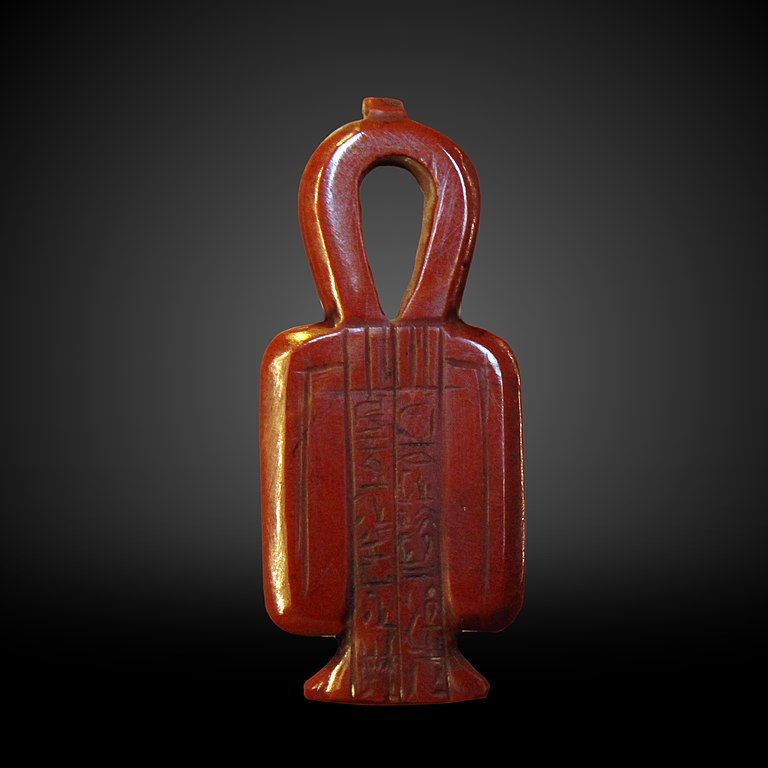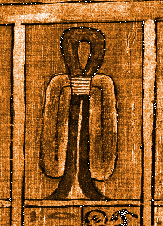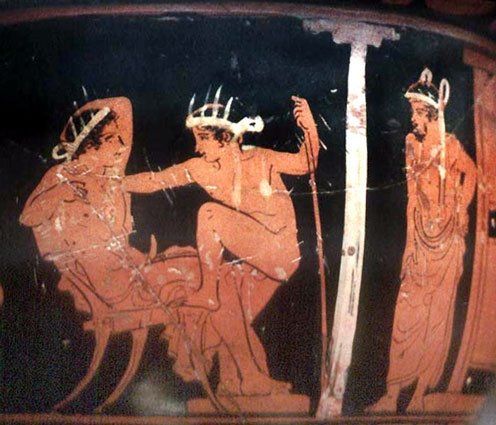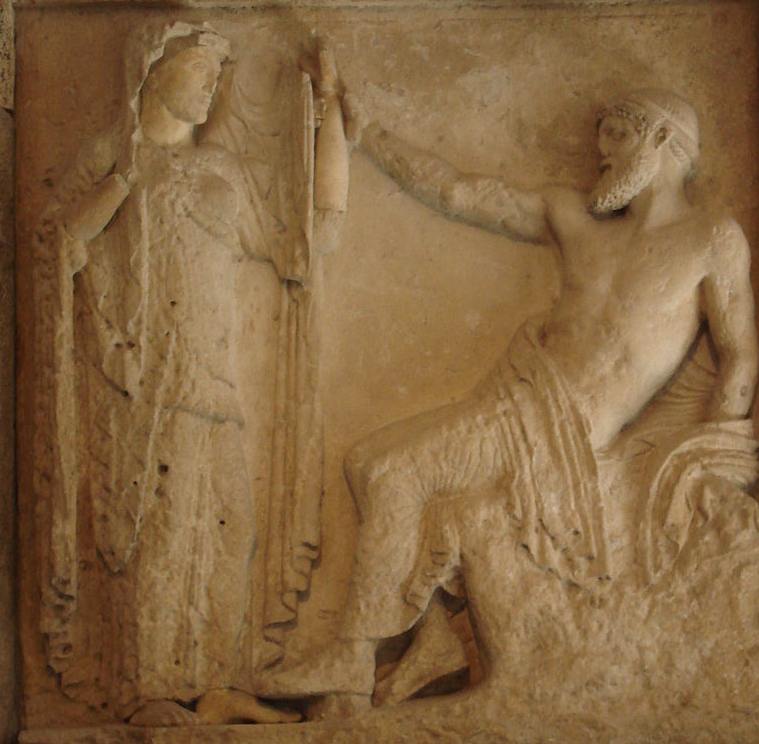Menstruation in the Ancient World

Menstruation may seem to some an odd topic to write about on an erotica blog, but women do enjoy sex, erotica, and masturbation while bleeding. I know I do. That is why, when Serena sent me this tweet, I laughed, because I could totally relate:
When I forget I’m on my period and start masturbating https://t.co/7DMKDyX7nj
— 🖤 (@YeIIowbang) October 16, 2018
I didn't laugh anymore when I read the comments beneath the tweet.
Maybe I grew up in a very niche environment, but none of the people in my life have been squeamish to talk about menstruation. As a teenager, a male friend even asked if he could see my (bloody) tampon, because he was curious. That is why people acting with such aversion to the subject always leave me open-mouthed.
On the other hand, there exist cute sayings like "a good captain isn't afraid to sail the red sea" or "menstronaut" (though shouldn't it be menstrunaut?) for men who are not bothered by a little blood and engage in sexual activity during menstruation.
Menstruation is surrounded by myths even to this day. And usually not the fun kind. Today, I want to take a look at the ancient world and how women back then dealt with their monthly bleeding.
Ancient Pads and Tampons

Since some people - myself included before I got intimate with the ancient world - think tampons were an invention of the 20th century and invented by a man, I present to you the real inventors: Egyptian women!
It is generally assumed that ancient Egyptian women fashioned a kind of throw-away tampon probably from papyrus or other grass. As flax was cultivated and even exported to other countries, cheap linen could also qualify as a raw material and be used by even the poorer groups of people. During the Roman era, cotton probably took the place of these materials, which is also what modern tampons are made of today. Both, tampons and pads, were used in ancient Egypt, but it is not clear which was preferred.
The tyet or Isis knot, a stone carving portraying a cloth that has been rolled up and looped around itself, could represent such a menstrual tampon.
In Sumer, women also used menstrual pads made of rags, as this Sumerian proverb aptly testifies. Copied down as part of the scribal curriculum, the proverb features a lady so wealthy she can dispose of, rather than wash and reuse, her menstruation rags:
"I am a lady of amazing clothes. Let me cut up my menstruation rag."
The ancient Greek medical texts that came to be known as the ‘Hippocratic corpus', written primarily in the 5th and 4th century BCE, described another type of tampon, which was made of lint wrapped around lightweight wood.
This type of tampon, however, is used to staunch a wound. The physician should roll up lint in a rag or in thin Carthaginian leather (chosen because it is so soft) and insert this into a fractured nose.
Greek and Hebrew inscriptions describe the use of tampons for contraception, but did they use it for menstrual care too?
According to Helen King who wrote her PhD thesis on ancient Greek menstruation, women in ancient Greece used home-made pads of rags, rather than tampons.
Menstruation in Mythology
The name "Isis knot" for what is thought to be ancient Egyptian tampons, refers to the goddess Isis, who according to legend, used a tampon while pregnant with Horus. The god Seth had tried to destroy the baby in her womb many times, sometimes by causing premature bleeding. Seth killed Osiris, his brother and father of Horus and, failing to kill the baby, Seth would spend a lot of time trying to defend the throne of Egypt against the grown Horus.
So Isis could be understood as the inventor of the first tampon if we presuppose that the Isis knot served as such an object.
The tyet or Isis knot was often used as a protector talisman.
Gaius Plinius Secundus Maior, in English Pliny the Elder, wrote a book on Natural History called Naturalis historia. What he recounts about menstruation is not mythology per se, but ancient Roman superstition. It gets pretty wild:
- Must will get sour in the presence of a menstruating woman
- Crops will become infertile by her touch
- Mirrors will become dull if she looks at it
- Iron will lose its sharpness and start rusting
- Hail and storm can be averted by a menstruating woman exposing herself towards the lightning
- Fucking a menstruating woman during a solar or lunar eclipse or during a new moon can end deadly for a man
All in all, it's pretty hard to discern real ancient mythology from wishful thinking or romanticisation. I found these 2 additional myths for which I did not find any reliable sources:
Thor, allegedly, had to travel a river of menstrual blood to reach a magic land of enlightenment. The source of the blood were giantesses. This myth does have similarities to a story in which Thor and Loki travel to Jotunheim and a giantess is peeing, so Thor throws a rock to block the flow from the giantess' urethra so he and Loki won't be swept away by the raging torrent.
Mothers dedicated richly woven textiles to Artemis after their daughters had successfully experienced menarche. The girls then passed on to the protection of Hera, who was the patron goddess of menstruation and women's fertility.
Hera or Hebe also serve nectar to the gods which, it seems, some people interpret as miraculous menstrual blood. The Greeks did think that menstrual blood would nourish a foetus during pregnancy. But if the gods were dependent on it for their immortality?
Menstruation and Sex
Performing cunnilingus on a menstruating woman was possibly the most obscene thing a man and a woman from ancient Greece or Rome could do in bed. That doesn't mean it never happened, but men giving cunnilingus were a subject of ridicule. The vagina was said to have a strong smell of salted fish and cunnilictors were accused of having bad breath and an impure mouth "in which women purged themselves" (in cuius ore feminae purgabantur). Cicero claims one Sextus Cloelius performed cunnilingus on menstruating women.
Ovid advises the lover who wants to fall out of love to observe the woman performing something "obscene," presumably waste elimination, especially menstruation. Menstrual blood was thought to be not only emotionally but also physically powerful, so strong it could dissolve the bitumen that clung to boats in the Dead Sea.
Sources
- Hera Summary on theoi.com
- 10 ancient Egyptian Medical Practices we still use Today by Listverse
- Menstruation, Menstrual Hygiene and Woman's Health in Ancient Egypt by Petra Habiger
- The history of tampons in ancient Greece by Helen King
- Dress, Gender and the Menstrual Culture of Ancient Greece by Amy Pence-Brown
- Women's Health in ancient Mesopotamia Q&A by Dr. Moudhy Al-Rashid
- Dress, Gender and the Menstrual Culture of Ancient Greece by Amy Pence-Brown
- Naturalis historia by Gaius Plinius Secundus Maior (Pliny the Elder)
- Sex in the ancient World from A-Z by John G. Younger



